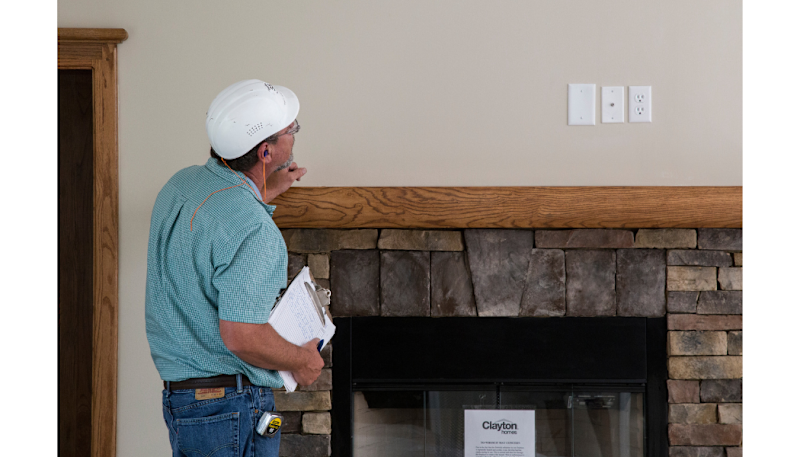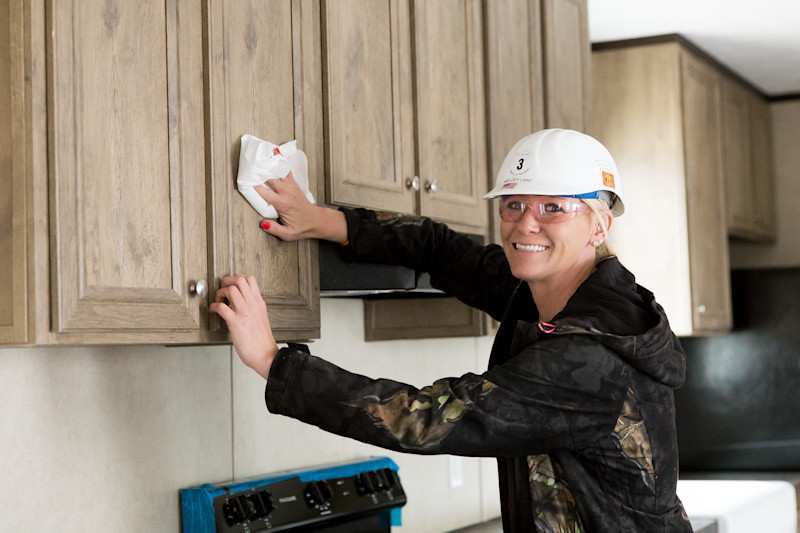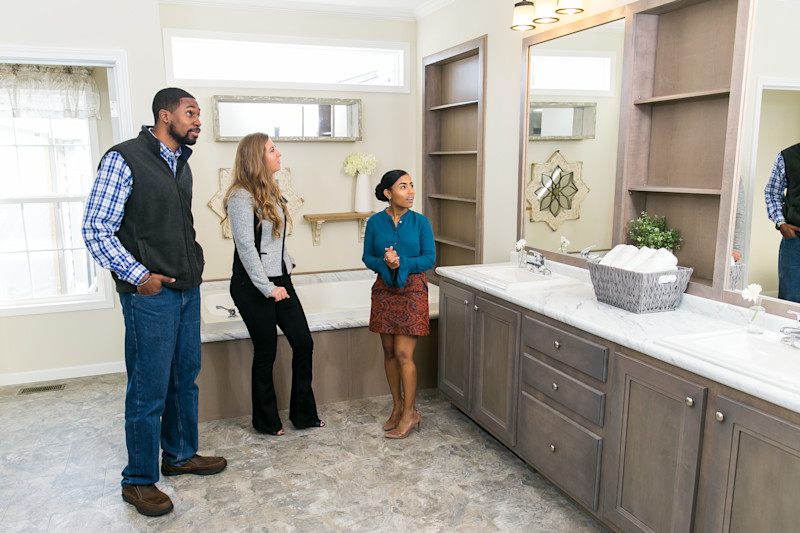What to Know About New Manufactured Home Inspections

Learn more about the inspection process for new Clayton homes, from the construction steps at the building facility to what is inspected once the home is delivered to the home site.
You may have heard the phrase “home inspection” but only have a vague idea of what it includes or who does the inspecting. For example, is it separate from a home walkthrough? Do you have to have one? Or, you could be wondering how a manufactured home inspection is different from a traditional site-built one. Spoiler alert: There are only a few differences.
At Clayton, we understand that the home buying process has multiple complex steps, and that each step can spark just as many questions. Believe me, when I bought my first home, I wasn’t clear on how a home inspection worked either. With a new Clayton manufactured home, your home is inspected several times throughout the entire process, from building the home to when it’s delivered.
Before we get started, let’s clearly define and explain some points to know:

Key Takeaways
- Before your manufactured home is delivered, it’s inspected at the facility during each stage of construction for both quality and national HUD building code compliance.
- A home inspection’s purpose is to assess the home and ensure its structure and systems are built and working properly and safely, and to note any issues that may be present.
- An inspection is not the same thing as a home appraisal, which assesses a home’s value, usually in comparison to similar homes in the area.
- A final walkthrough for your manufactured home means you and your home center consultant will go room-by-room to check that everything is working, clean and free of damages before you move in.

At the Home Building Facility
All manufactured homes built after 1976 are constructed according to the HUD Manufactured Home Construction and Safety Standards, or HUD code, which was created by the U.S. Department of Housing and Urban Development. These national standards set requirements for the manufactured home construction, energy efficiency, safety and more.
All new Clayton manufactured homes undergo an internal inspection process in the home building facility to make sure that every part of the home meets HUD code. Inspectors will assess several areas of how the manufactured home is built, including its body and frame, thermal protection, roof, plumbing systems, electrical, fire safety and, of course, the structural stability before the home is transported to your home site.
Your home will include a certification label to signify that the home is built in accordance with and meets HUD code. You can usually find it on the back right corner of the exterior of the home. The information is also typically included on the home’s data plate, which will be located somewhere in the interior of your home.
Before Closing
Depending on your specific loan type you choose and its conditions, your lender may ask for or require an appraisal during the home buying process before final loan approval or closing. This is to make sure the mortgage amount you’re applying is at least equal to the home’s value. For example, if the house’s market value is higher? than the loan amount, adjustments would need to be made to ensure the amount is what the borrower needs. Home buyers are usually the ones responsible for the cost of an appraisal.
At a glance, a home appraisal may seem similar to an inspection, but an appraisal isn’t looking as deeply at home for any potential issues. An appraiser is focusing on determining the home’s worth by looking at factors like size of the home, its location, the general condition? of the property and the value of comparable homes in the area.
After Delivery

A home inspection also takes place after closing and once the new manufactured home has been delivered, installed on your prepared home site and hooked up to the utilities. If you’re purchasing a manufactured or traditional site-built home that has already been built and is on land, a home inspection is typically not required, depending on your loan type, but can be requested. At Clayton, we recommended this it gives the home buyer the opportunity to address any possible issues that may exist before the final walkthrough and offers additional peace of mind. The home buyer normally covers the cost for a requested inspection. Home inspections may also vary somewhat depending on your location in order to comply with your specific state, county and city regulations.
Similar to inspecting a site-built home, a licensed inspector will check a manufactured home from the foundation to the siding and roof. They’ll also inspect the home’s interior floors, walls, ceiling, windows and doors. Plumbing, electrical and HVAC systems, and utility connections will also be assessed, along with safety requirements, like having smoke detection devices installed or features like a fireplace.
Some manufactured home specific details that will be inspected for their conditions can also include:
- The foundation: Manufactured homes can have different foundation types, such as a concrete slab or a pier and beam system. Regardless of the type, it will be inspected, along with the anchors and tie downs for wind safety. If you have a basement or crawl space, it will be included in the inspection, too.
- The vapor barrier: A vapor barrier is usually made of plastic sheeting and is installed under the manufactured home to create a protective layer to prevent moisture, insulate against heat loss and help maintain your home’s air quality. An inspection will make sure the barrier meets thickness requirements and is installed properly so moisture won’t leak in.
- The skirting: Also known as underpinning, skirting encloses the space under a manufactured home, if it has one, and is typically required under building codes to help prevent damage to the home.
- The marriage line: If your home has multiple sections, the marriage line is where those sections are joined. The inspection makes sure this line is aligned and sealed properly.

Once the inspection is complete, you’ll be given a report by the inspector. It will give you a summary of everything they checked, as well as any issues they may have found. It’ll also document other important basic information, like your address, the year of the home’s construction, who was present at the time of the inspection, a definition of terms included in the report and your state’s standards for inspections.
Be sure to go over the report and discuss any needed repairs or touch-ups with your home center consultant. You’ll want to make sure to have those findings addressed before closing, especially if there’s anything needing immediate attention. And if you can be present at the inspection, I recommend it. My spouse and I were present for ours, and it was helpful and reassuring to see what the inspector looked for.
Final Walkthrough of Your Home

Before move-in day, your manufactured home site crew, which your home center can help you coordinate, will make sure your home and your surrounding property are ready to go, and you’ll have the final walkthrough with your home center consultant. If there are any concerns, the home center will work with the home building facility to resolve them quickly. It’s also your chance to get to admire your home and imagine how you’ll fill it with your furniture and decor to make it your own.
Congratulations on the start of your homeownership journey! We know you’re ready to start getting settled into your new home, so for more resources and tips on being a homeowner, including knowing all about your warranties, check out the Homeownership section on our Clayton Studio blog.
Are you ready to find your dream home?
Start shopping now or find a home center in your area to learn more about Clayton Built® home options.By entering your email address, you agree to receive marketing emails from Clayton. Unsubscribe anytime.
© 1998-2025 Clayton.




